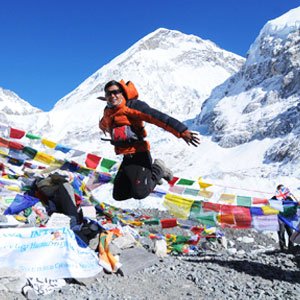.jpg)
Everest Base Camp Trek route
Our Everest Base Camp Trek is 14 days long. It is our regular itinerary that is professionally designed with enough acclimatization days in between the trek. You will spend a couple of nights in Kathmandu and fly to Lukla (2,846 m) on the third day. The flight will be short and offers excellent aerial views of the Himalayas.
From Lukla, the adventurous Everest Base Camp Trek begins. Following a forested trail, you will drop down to Phakding village (2,610 m) on the same day to spend the day. The trail ascends to Monjo (2,835 m) from where Sagarmatha National Park begins. Registering your permit at the police checkpoint, you will continue trekking through dense forests, crossing thrilling wooden bridges and suspension bridges. The trail is steep and climbs to Namche Bazar (3,440 m).
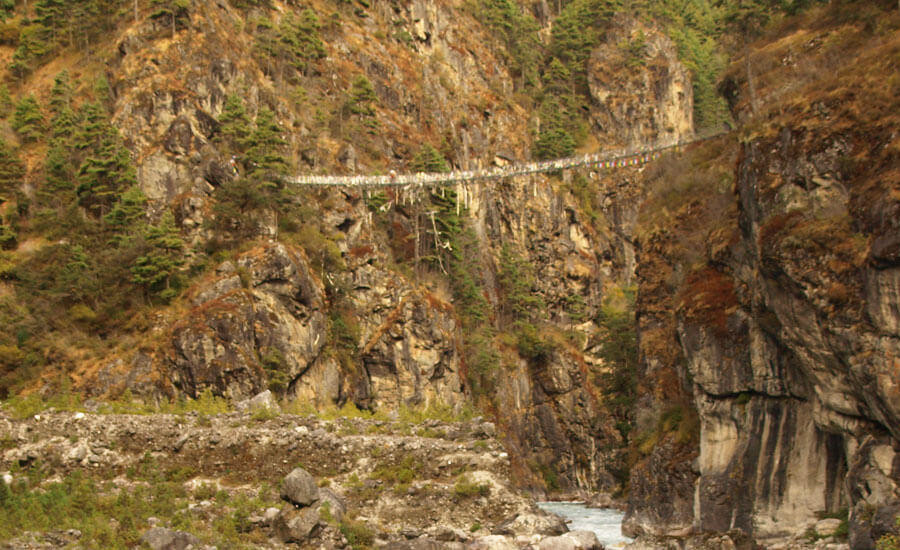
Before leaving Namche Bazar, you will spend a couple of nights here to acclimatize. Explore the village and hike to the Everest View Hotel (3,962 m). The trail then gradually ascends through a lush forest of rhododendrons to Tengboche village (3,860 m). Visit the biggest monastery of the Khumbu region in this village and trek towards Dingboche (4,410 m). The route to Dingboche winds through small settlement areas and forests.
You will spend an extra day in Dingboche to acclimatize and ascend to Lobuche (6,119 m). The next day, passing by Gorak Shep (5,164 m), the trail will take you to the Everest Base Camp (5,364). The trail ascends along the Khumbu Glacier moraine. Further, hike to Kala Patthar (5,643 m) to witness 360-degree views of Mt. Everest (8,848 m) and stunning sunrise.
From here onwards, the trail descends to Pheriche and drops down to Namche Bazar. Retracing the path, you reach Lukla and fly back to Kathmandu.
Here are some furthermore adventurous and challenging itineraries that combine EBC: Gokyo Lake Trek with EBC, Everest Three High Passes Trek, and Everest base camp helicopter return trek.
Everest Base Camp Trekking terrain
There are numerous ascents and descents throughout the Everest Base Camp Trek route. Likewise, the trail has a fair share of steep and rugged sections. You will be walking on glacial and rocky paths too. Most part of the trail passes by verdant forests rich in flora and fauna.
Likewise, you will also trek through remote mountain settlement areas. There are many wooden bridges and suspension bridges to cross during the trek. Moreover, some streams are crossed with the help of rocks in it or walking in it.
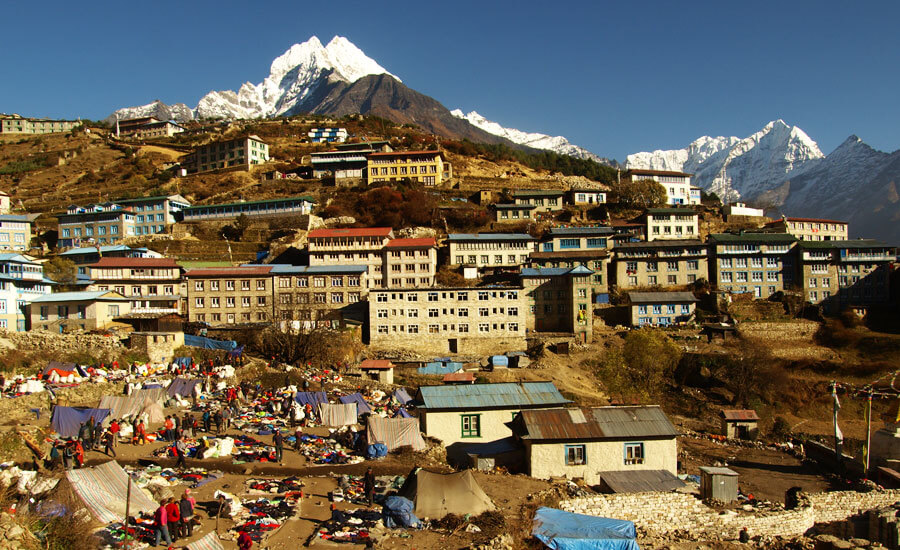
Every day there is a 6 to 7 hour of walk. Trekkers have to carry a day pack, where they can store water bottles and other essentials. Every new village will welcome you with the rise in altitude and isolation. You have to walk in the thin air above Lobuche, which may exhaust you quickly.
And above all this, there is a chance of altitude sickness. To stay away from altitude sickness, you have to acclimate your body to the increased altitude. Similarly, you also have to keep yourself hydrated (drink at least 2 liters of water every day) and avoid alcoholic drinks or smoking.
With our Everest Base Camp Trek itinerary, there is a very slight chance of altitude sickness. Likewise, our crew members will also take care of your health on the trail. If you see any of the symptoms of altitude sickness, inform your guide immediately.
Below are the symptoms of altitude sickness
- Breathing problem
- Loss of appetite
- Nausea and dizziness
- Vomiting
- Bad headache
Everest Base Camp Trek distance
The total distance from Lukla to Everest base camp is 130 k.m. Depending on your pace and itinerary, it will take you 12-14 days. Every day you will cover at least 15 km. You will walk at about 5km/hour. Due to the rocky trail and the constant ups and downs, you will not be able to trek at the same pace every day.
The remoteness of the region
Despite the remoteness, EBC has 3G connections. The signals are not 100 percent guaranteed. It has Wi-Fi as well as electricity. However, transportation is not available due to the terrain. So, the food takes about 2-3 days from Lukla to reach EBC, which is why as the altitude grows the cost of accommodation and food increases too.
There are also medical centers set up in EBC since 2004. The Pasang Lhamu - Nicole Niquille Hospital is in Lukla. It is the most important health service provider. The hospital is well equipped with specialists in altitude sickness. The international trekkers also go for consultation and medicines.
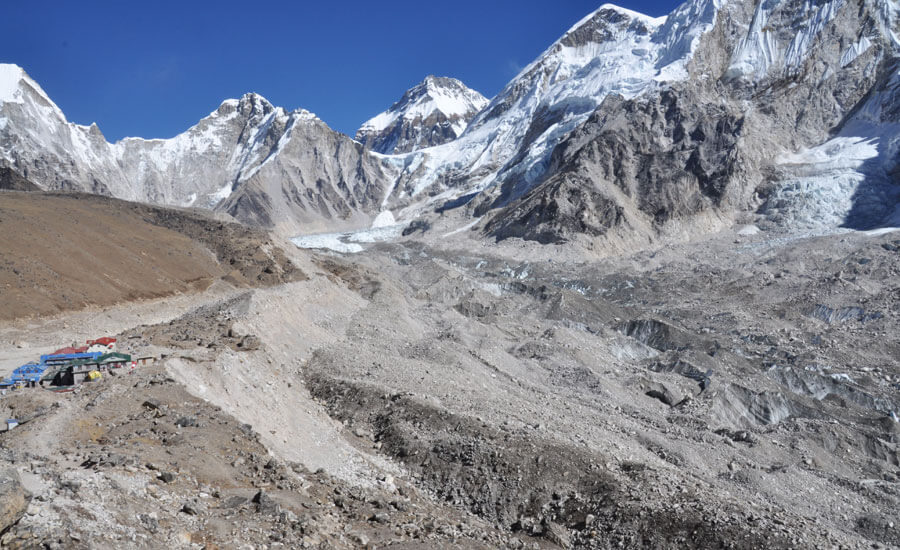
Weather and Climate
Since EBC lies at a high altitude, the climate is cold throughout the year. The average temperature during the coldest month December to January can go up to -20 degrees celsius. During the summer season, you can observe the sun for at least 7 hours, however, the nights are cold even during summer.
During spring, the weather is sunny and the skies are clear. Autumn is the best month to trek to EBC. However, the daytime is sunny and at the same time, there can be strong winds making the weather cool. So, considering the most suitable weather to travel to EBC is spring and autumn.
Basic modern facilities
The Everest region is one of the secluded parts of Nepal. There are no proper means of transportation, and basic infrastructure is underdeveloped. Namche Bazar has the most modern services, including cafes, WiFi, pub, shops, restaurants, ATM booths, etc. Above this village, you will only see a handful of services in some of the villages.
We don't want you to give false expectations when it comes to WiFi and cellular data. Even the places that offer WiFi may not have reliable connections all the time, and the phone network is also unstable most of the time. People do say you can use the internet on EBC too, but what they don't mention is how unreliable it is.
Likewise, getting a power supply to charge your device is also not easy. In most lodges, you have to pay on an hourly basis to charge your devices and that can get expensive for some trekkers. So, make sure to carry extra batteries or a solar charger with you.
Frequent delays and cancellation of flights out of Lukla
The earliest your flight time will be, the more chances of it not getting canceled or delayed. First of all, Lukla airport is 5,643 meters in height. Landing and taking off from that airport is not an easy deal. The pilots have to have extensive knowledge of the airport, hills, and terrain to land an airplane at Lukla airport.
The first flight takes off at 6 am. Even a flight at 10:30 am is considered a late flight, this means a high chance of cancellation. There are no flights to Lukla in the daytime or evening. After the cancellation of the flight, you either have to wait for another flight or take a helicopter ride to Kathmandu.
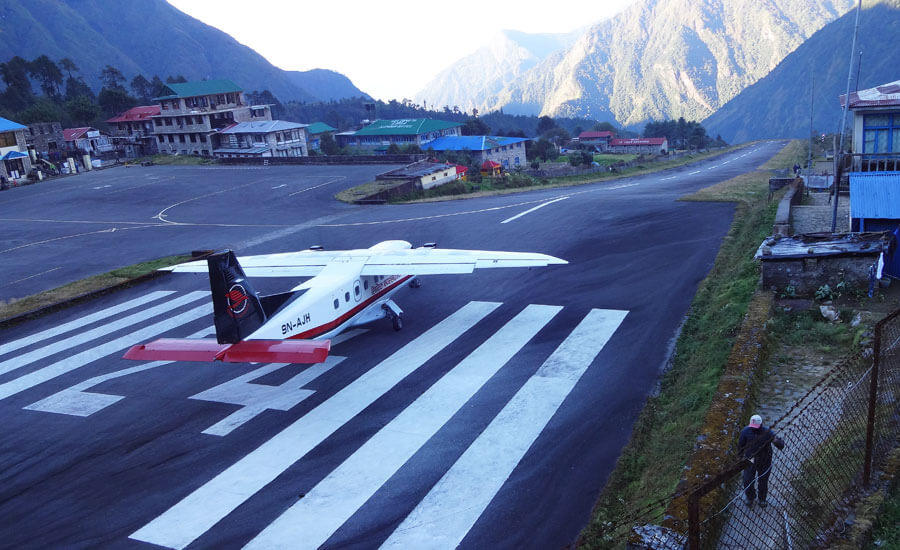
Drinking water
Drinking water is available in all the lodges and tea houses along the route. You can carry a reusable water bottle and refill the bottle in the lodge. It is cost-effective and does not litter the trail. You can carry chlorine-based water purification tablets to double purify the water. Many trekkers do that, or you can also get a Stir Pen.
Basic Accommodation
Until you are ready to pay USD 300 above per night, then do not think of a fancy lodge to spend the night. The general accommodation is decent and comfortable. The rooms are equipped with a clean bed and blanket. Likewise, the toilet can be attached to the room or common depending upon the lodge. The lodge and teahouse at the higher elevation are even more basic and the cost will rise.
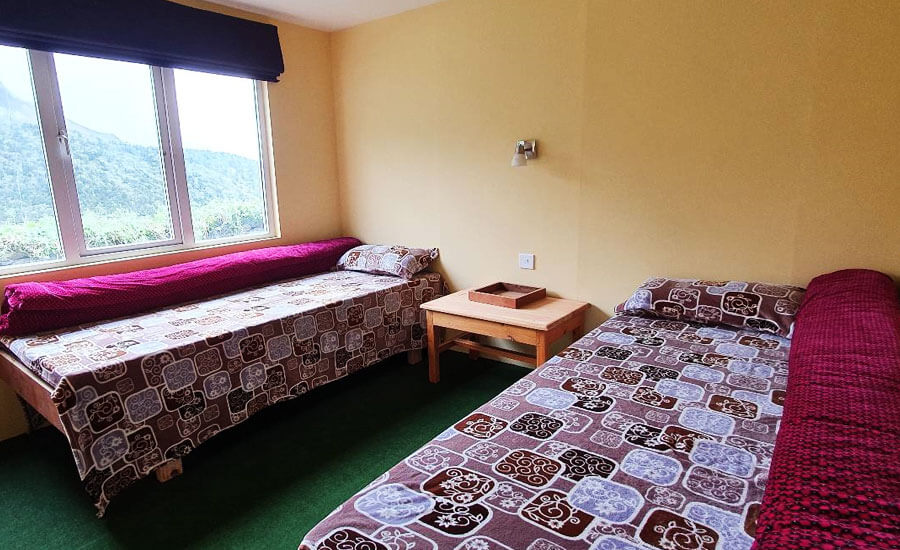
Food
EBC trekking routes have a wide range of food options. You can get world-class cuisine at luxury lodges. Some of the general meal options are dal Bhat, chapati, veggies, curries, momo, noodles, Thenduk, Thukpa, steak, pasta, etc. In Namche Bazaar, you can also get pizza and fresh bakery items.
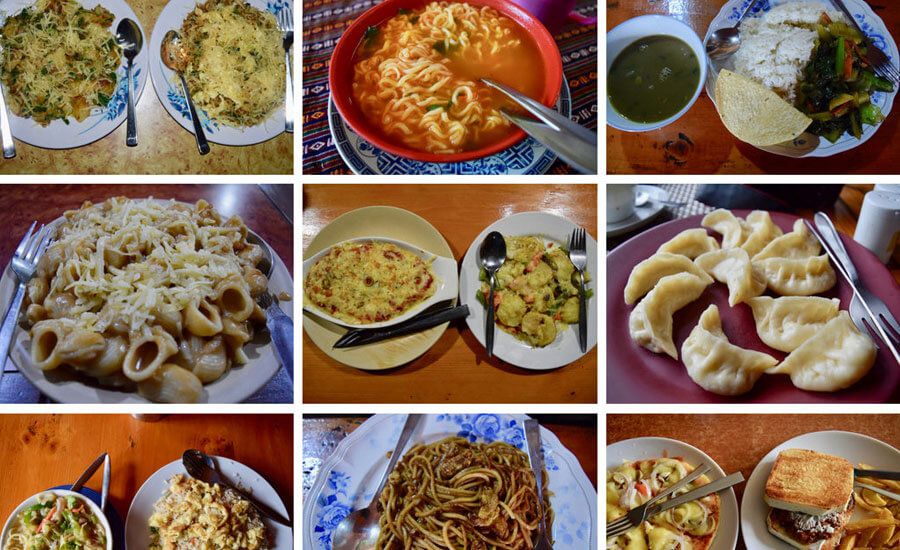
Things no one tells you about trekking to Everest Base Camp
- Picking the right itinerary is essential. See what your fitness level is and then choose the itinerary. Try not to cut the rest days and maintain the increase in elevation.
- Walk slowly and conserve your energy. Do not rush and take your time to walk.
- Do not trek alone. It will only make the trek more challenging. Get an experienced guide and a porter to carry the luggage.
- You do not have to be remarkably fit or possess previous trekking experience to go on the Everest Base Camp Trek.
- The higher you go, the more expensive it will get, so try to carry all the essentials, including snacks, toilet paper, etc.
- You will not need ten rolls of toilet paper.
- You can rent a nice down jacket and sleeping bag too.
- ATM fees on some cards can get enormous.
- Getting a local sim with data is more convenient than relying on WiFi.
- You have to pay to charge your electronic devices or use a hot shower.



.jpg)






